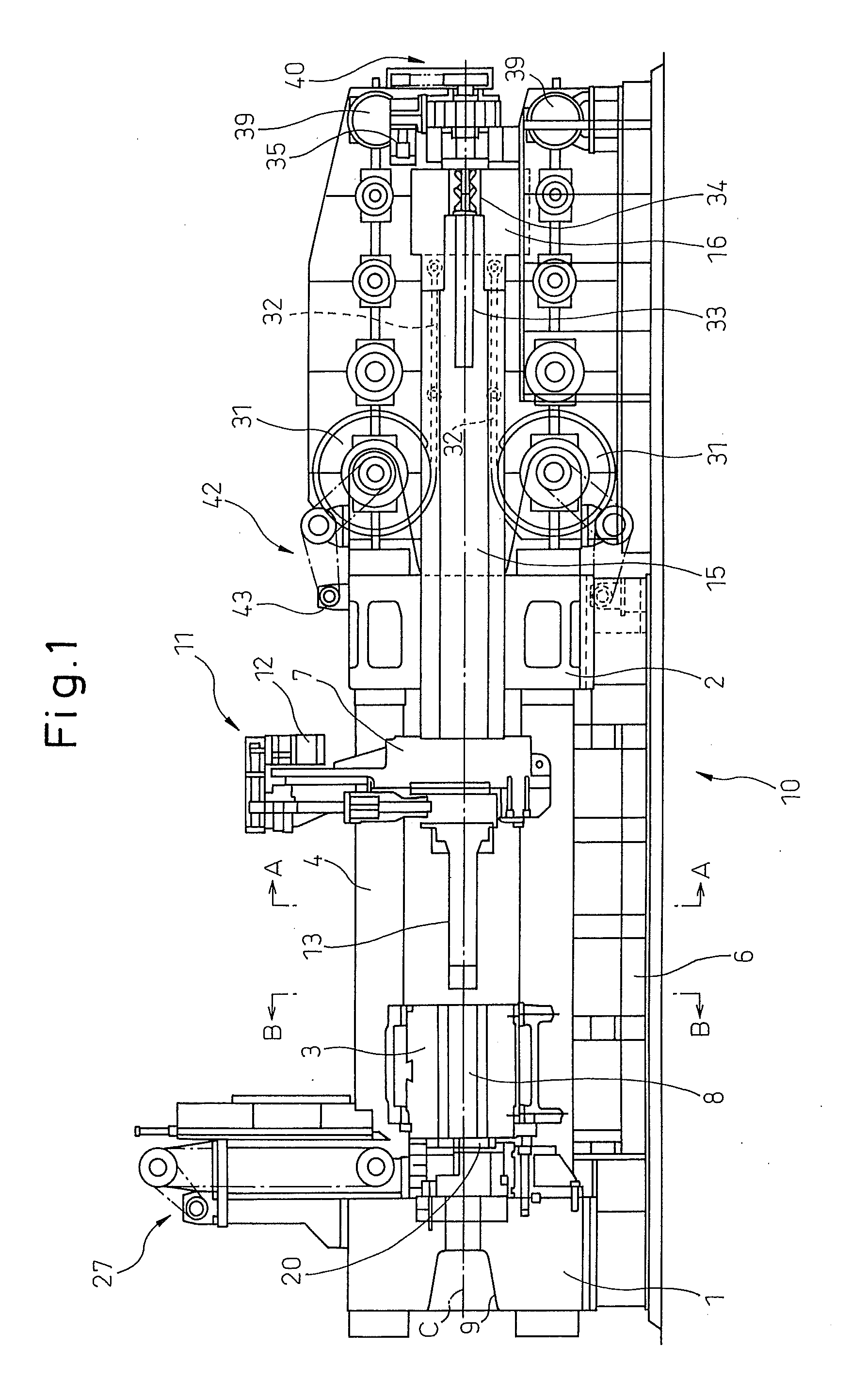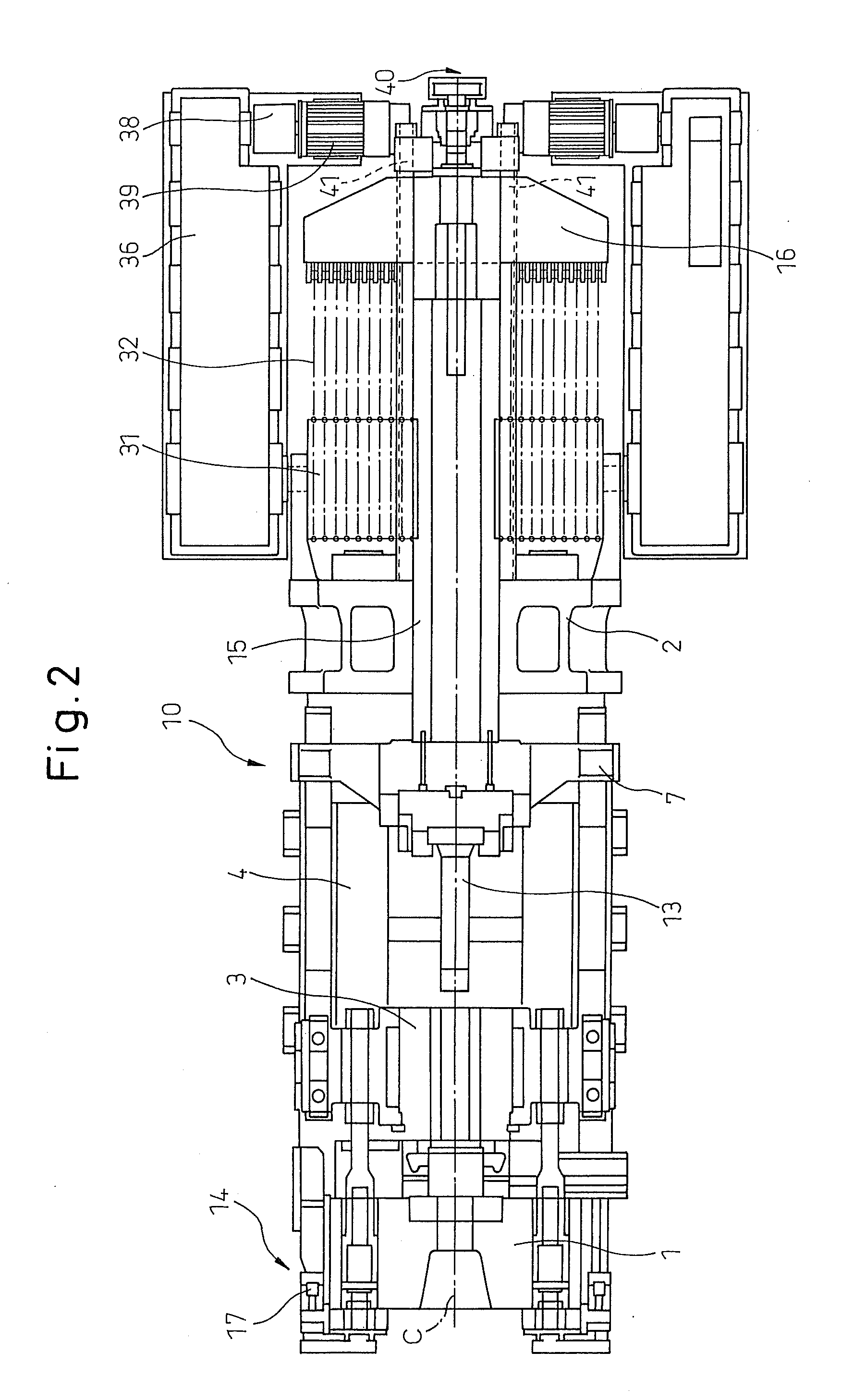Extrusion press
a technology of a press and a press body is applied in the field of extrusion presses, which can solve the problems of large output electric servomotors, power consumption loss, and environmental pollution, and achieve the effects of reducing time and cost for maintenance and management, reducing power, and reducing nois
- Summary
- Abstract
- Description
- Claims
- Application Information
AI Technical Summary
Benefits of technology
Problems solved by technology
Method used
Image
Examples
first embodiment
[0039]Referring to FIG. 1 and FIG. 2, an extrusion press 10 of the present invention comprises an end platen 1 located at the front end part and a fixed platen 2 located in the vicinity of the center of the device. At the center of the end platen 1, a through hole 9 is provided through which a product is caused to pass, which product is molded by extruding a billet 8 into a predetermined shape via a die 20. In the present embodiment, as can be seen clearly from FIG. 4, the end platen 1 and the fixed platen 2 are coupled by four tie rods 4 arranged in the four corners. Between the end platen 1 and the fixed platen 2, in the vicinity of the end platen 1, a container 3 to be loaded with the billet 8 is arranged so as to be supported by a container holder (not shown schematically) and on the side of the fixed platen 2, a crosshead 7 is arranged so as to be supported by the four tie rods 4. The tie rods 4 penetrate through the four corners of the crosshead 7, respectively. Between the en...
second embodiment
[0047]The container 3 is reciprocated (move forward and back) by the container operating motor 17, which is preferably an inverter motor or AC servomotor, via the mechanism including the ball screw and the ball and configured to convert rotational motion into linear motion. In the case of the front loading system (second embodiment to be described below), on the opposite side of the extrusion stem of the fixed platen, the container operating device 14, such as the container operating motor 17, is provided. This is because the movement stroke of the container is large. In the shear device 27, an electric motor is used as a power source and rotational motion is converted into rectilinear motion via the winding drive mechanism, such as a chain. The die slide device (shear) 21 uses an electric motor as a power source and converts rotational motion into rectilinear motion via the power transmission mechanism including the ball screw and the ball nut. The stem slider also uses an electric...
PUM
| Property | Measurement | Unit |
|---|---|---|
| pressure | aaaaa | aaaaa |
| speed | aaaaa | aaaaa |
| shape | aaaaa | aaaaa |
Abstract
Description
Claims
Application Information
 Login to View More
Login to View More - R&D
- Intellectual Property
- Life Sciences
- Materials
- Tech Scout
- Unparalleled Data Quality
- Higher Quality Content
- 60% Fewer Hallucinations
Browse by: Latest US Patents, China's latest patents, Technical Efficacy Thesaurus, Application Domain, Technology Topic, Popular Technical Reports.
© 2025 PatSnap. All rights reserved.Legal|Privacy policy|Modern Slavery Act Transparency Statement|Sitemap|About US| Contact US: help@patsnap.com



